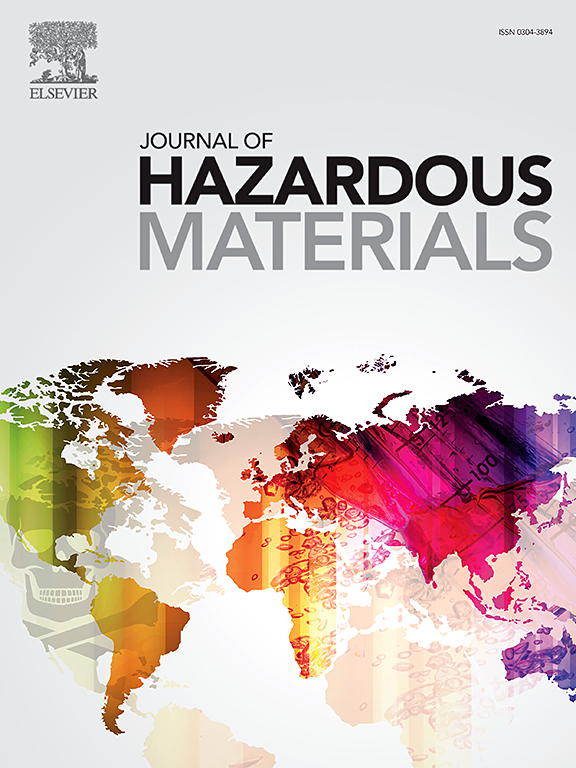Baseline biomonitoring of microplastic pollution in freshwater fish from the Chishui River, China: Insights into accumulation patterns and influencing factors
IF 11.3
1区 环境科学与生态学
Q1 ENGINEERING, ENVIRONMENTAL
引用次数: 0
Abstract
In recent years, there has been growing concern about microplastic pollution in aquatic environments worldwide owing to the possible threat to fish health and river ecosystem. Fish are important indicator organisms in rivers, and their microplastic contamination reflects the plastic pollution status of the river. In this study, we conducted the first biomonitoring of microplastic contamination in freshwater fishes from the Chishui River (primary tributary of the Yangtze River), analyzed microplastic abundance, shape, size, and polymer types in gills and intestinal contents of 31 fish species using laser direct infrared imaging spectrometer (LDIR). The main findings were: (1) A total of 32 types of polymers were identified in the fish, exceeding those detected in environmental compartments (16 in water and 10 in sediment). Chlorinated polyethylene (CPE) was identified as the predominant type of microplastic polymer across water, sediment and fish; (2) Microplastic abundance in the 31 fish species ranged from 22.5 to 940 items/g (mean 246.42 items/g) in gills and from 8.5 to 968.75 items/g (mean 231.73 items/g) in intestinal contents. The fish in Siluriformes represented significantly higher intestinal microplastic abundance (382.38 ± 334.44 items/g) than that in Cypriniformes (185.96 ± 167.10 items/g) (p < 0.05). Moreover, benthic fish represented significantly higher microplastic abundance in intestinal contents (391.50 ± 299.82 items/g) than pelagic fish (155.65 ± 107.93 items/g) (p < 0.05); (3) The abundance of smaller particles was consistently identified significantly higher than that of larger particles in water, sediment, and fish. Three shapes (fragment, pellet and fiber) of microplastics were detected in fish while only fragment and pellet were found in water and sediment; (4) The polymer hazard index (PHI) assessed based on the polymer-specific risk index were much varied ranging from 275.40 (Pelteobagrus fulvidraco) to 8382.32 (Acrossocheilus yunnanensis) in total suggesting the hazard risk level from III to V. The microplastics are hazardous substances, uptake of which could cause physical damage and chemical toxicity, threatening fish health. Thus the present study would establish the first evidence of microplastic contamination in fish from the Chishui River, providing critical baseline data for developing targeted mitigation strategies in the future.

赤水河淡水鱼微塑料污染基线生物监测:积累模式及影响因素
近年来,由于微塑料污染可能对鱼类健康和河流生态系统造成威胁,人们越来越关注全球水生环境中的微塑料污染。鱼类是河流中重要的指示生物,其微塑料污染反映了河流的塑料污染状况。本研究首次对赤水河(长江主要支流)淡水鱼的微塑料污染进行了生物监测,利用激光直接红外成像光谱仪(LDIR)对31种鱼类的鳃和肠道内容物中的微塑料丰度、形状、大小和聚合物类型进行了分析。主要发现有:(1)鱼类体内共鉴定出32种聚合物,超过了环境隔间(水中16种,沉积物10种)中检测到的聚合物。氯化聚乙烯(CPE)是水体、沉积物和鱼类中主要的微塑料聚合物类型;(2) 31种鱼类的微塑料丰度在鳃中为22.5 ~ 940项/g(平均246.42项/g),在肠内容物中为8.5 ~ 968.75项/g(平均231.73项/g)。志留形鱼类的肠道微塑料丰度(382.38±334.44个项目/g)显著高于鲤形鱼类(185.96±167.10个项目/g) (p <;0.05)。此外,底栖鱼类肠道内容物的微塑料丰度(391.50±299.82项/g)显著高于远洋鱼类(155.65±107.93项/g) (p <;0.05);(3)水体、沉积物和鱼类中小颗粒的丰度均显著高于大颗粒。在鱼类中检测到碎片、颗粒和纤维三种形状的微塑料,而在水和沉积物中仅检测到碎片和颗粒;(4)基于聚合物特异性风险指数评价的聚合物危害指数(PHI)差异较大,在黄颡鱼(Pelteobagrus fulvidraco) 275.40 ~ 8382.32之间,表明危害风险等级为III ~ v。微塑料是有害物质,其吸收可造成物理损伤和化学毒性,威胁鱼类健康。因此,本研究将确立赤水河鱼类中微塑料污染的第一个证据,为未来制定有针对性的缓解战略提供关键的基线数据。
本文章由计算机程序翻译,如有差异,请以英文原文为准。
求助全文
约1分钟内获得全文
求助全文
来源期刊

Journal of Hazardous Materials
工程技术-工程:环境
CiteScore
25.40
自引率
5.90%
发文量
3059
审稿时长
58 days
期刊介绍:
The Journal of Hazardous Materials serves as a global platform for promoting cutting-edge research in the field of Environmental Science and Engineering. Our publication features a wide range of articles, including full-length research papers, review articles, and perspectives, with the aim of enhancing our understanding of the dangers and risks associated with various materials concerning public health and the environment. It is important to note that the term "environmental contaminants" refers specifically to substances that pose hazardous effects through contamination, while excluding those that do not have such impacts on the environment or human health. Moreover, we emphasize the distinction between wastes and hazardous materials in order to provide further clarity on the scope of the journal. We have a keen interest in exploring specific compounds and microbial agents that have adverse effects on the environment.
 求助内容:
求助内容: 应助结果提醒方式:
应助结果提醒方式:


